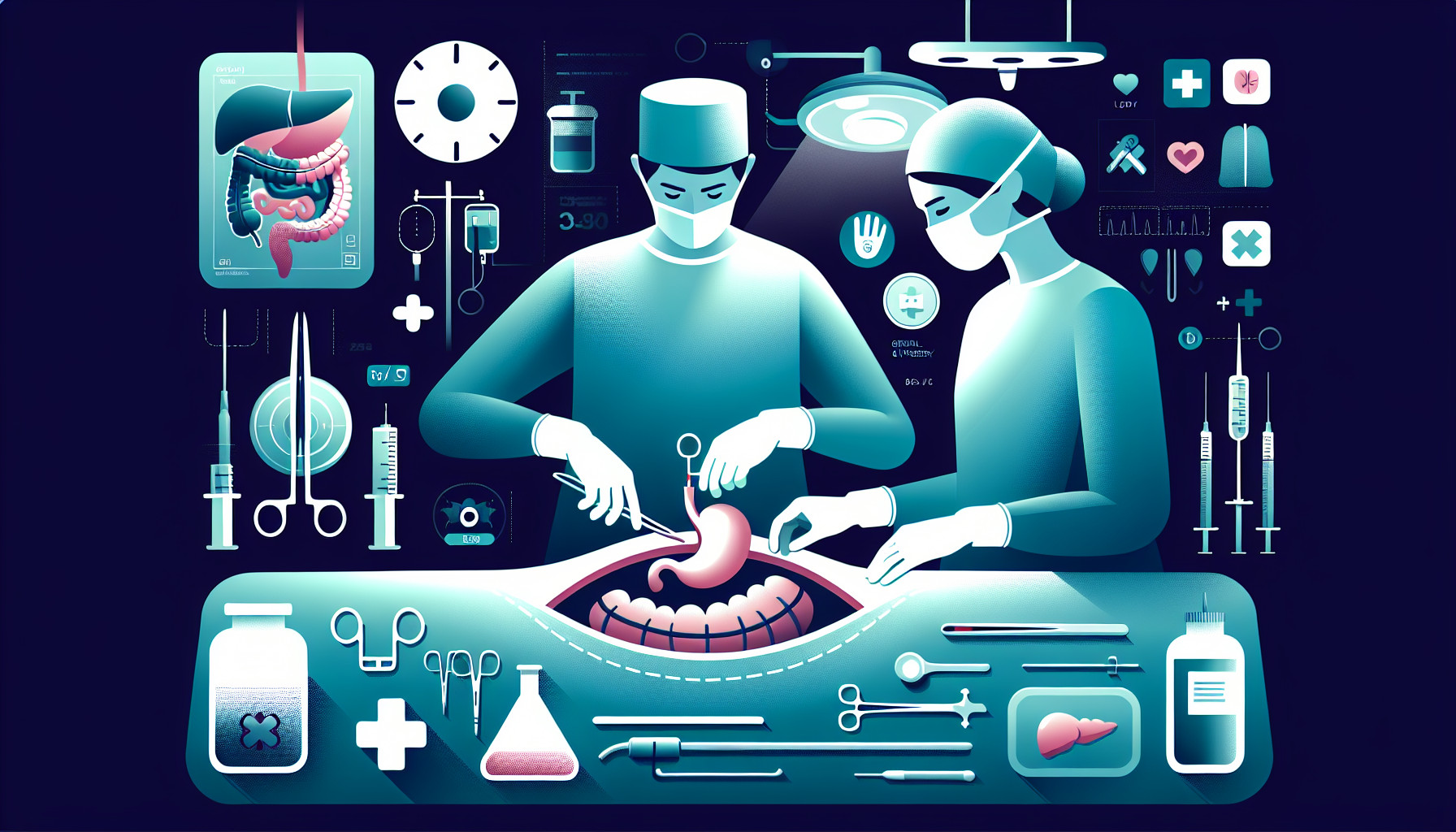Our Summary
This research paper discusses the increasing incidence of proximal gastric cancer, a type of stomach cancer that affects the upper part of the stomach near the esophagus. One common treatment for this type of cancer is laparoscopic proximal gastrectomy, a surgical procedure where the upper part of the stomach is removed. However, this procedure has not been widely adopted or standardized as the primary treatment due to disagreements about the best method for reconstruction after surgery.
Moreover, the safety of this procedure for advanced stomach diseases is still uncertain. The Japanese guidelines for stomach cancer suggest three types of reconstructions after the gastrectomy: reconnecting the esophagus to the stomach, creating a new path for food to pass, or inserting a part of the small intestine.
However, there is no agreement on the best method due to a lack of well-conducted and well-designed clinical trials. The technical difficulty and complications of these reconstructions have led to various complications.
The authors conclude that more large-scale, well-designed clinical trials are needed to evaluate the different reconstruction methods and determine the safety of laparoscopic proximal gastrectomy for advanced stomach diseases.
FAQs
- What is laparoscopic proximal gastrectomy and how is it used in the treatment of proximal gastric cancer?
- What are the three types of reconstruction methods suggested by Japanese gastric cancer guidelines for proximal gastrectomy?
- What are the challenges and complications associated with the reconstruction procedures after a proximal gastrectomy?
Doctor’s Tip
A helpful tip a doctor might tell a patient about gastrectomy is to follow post-operative care instructions closely, including taking medications as prescribed, following a specific diet plan, and attending follow-up appointments. It is important to report any unusual symptoms or concerns to your healthcare provider promptly. Regular exercise and maintaining a healthy lifestyle can also aid in the recovery process after gastrectomy.
Suitable For
Patients who are typically recommended for gastrectomy include those with early proximal gastric cancer, as well as those with advanced gastric disease. The optimal reconstruction method after gastrectomy is still a topic of debate, and further research is needed to determine the best approach. Patients may undergo esophagogastrostomy, double-tract reconstruction, or jejunal interposition as reconstruction methods. Complications with anastomoses are common, highlighting the need for careful consideration and evaluation of reconstruction methods. Multicenter randomized controlled trials are necessary to assess the various reconstruction methods and the oncological safety of gastrectomy for advanced gastric disease.
Timeline
- Before gastrectomy:
- Patient undergoes various diagnostic tests such as endoscopy, CT scans, and biopsies to confirm the presence of gastric cancer.
- Patient may undergo neoadjuvant chemotherapy or radiation therapy to shrink the tumor before surgery.
- Patient meets with their surgical team to discuss the procedure, potential risks, and post-operative care.
- During gastrectomy:
- Laparoscopic proximal gastrectomy is performed to remove the portion of the stomach affected by cancer.
- The surgeon may also remove nearby lymph nodes to check for spread of cancer.
- The remaining portion of the stomach is then reconstructed using one of the recommended methods (esophagogastrostomy, double-tract reconstruction, or jejunal interposition).
- After gastrectomy:
- Patient is closely monitored in the hospital for any complications such as infection, bleeding, or leakage at the surgical site.
- Patient will gradually transition from a liquid to a soft diet as their stomach adjusts to the changes.
- Patient may experience side effects such as dumping syndrome, reflux, and nutritional deficiencies.
- Patient will have regular follow-up appointments with their healthcare team to monitor their recovery and check for cancer recurrence.
Overall, the timeline of a patient’s experience before and after gastrectomy involves thorough diagnosis, surgical intervention, and post-operative care to ensure the best possible outcome for the patient.
What to Ask Your Doctor
Some questions a patient should ask their doctor about gastrectomy include:
- What is the reason for recommending a gastrectomy for my condition?
- What are the potential risks and complications associated with gastrectomy?
- How will my diet and eating habits be affected after the surgery?
- What is the expected recovery time and post-operative care plan?
- Will I need any additional treatments or therapies after the surgery?
- What are the long-term effects of gastrectomy on my overall health and quality of life?
- How often will I need follow-up appointments and monitoring after the surgery?
- Are there any alternative treatments or surgical approaches available for my condition?
- Can you explain the different reconstruction methods for gastrectomy and help me understand which one may be best for me?
- What is your experience and success rate with performing gastrectomy procedures?
Reference
Authors: Sun KK, Wu YY. Journal: Asian J Surg. 2021 Jan;44(1):54-58. doi: 10.1016/j.asjsur.2020.09.006. Epub 2020 Sep 24. PMID: 32981822
